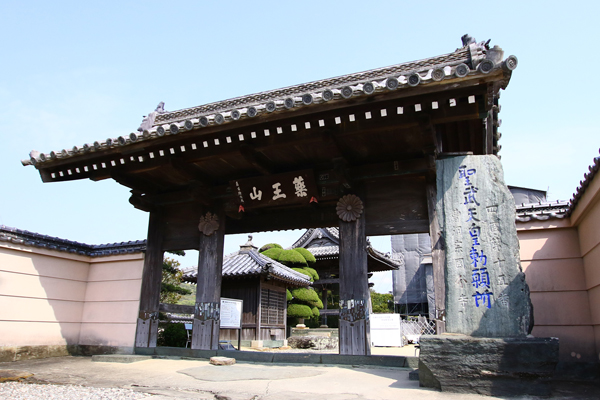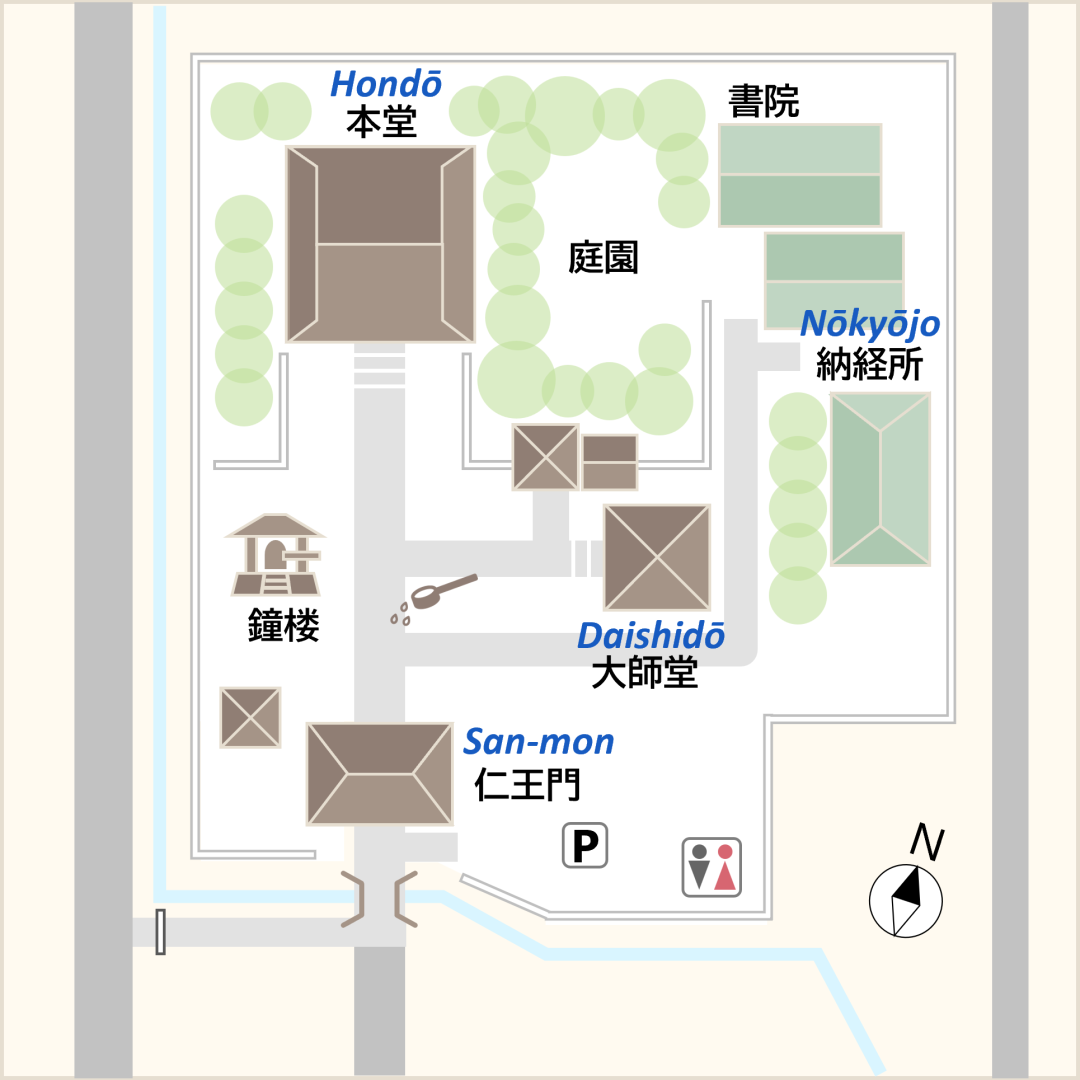The Shikoku Pilgrimage Temple Guide
Temple 15, Kokubunji

Precinct map

History of the temple
The Shikoku Pilgrimage includes Kokubunji (provincial temples built by the order of Emperor Shomu) in all four prefectures of the island. The first is Awa Kokubunji. Emperor Shomu (reigned 724-749), who was deeply devoted to Buddhism, ordered the construction of 68 Kokubunji and Kokubun nunneries throughout the country in 741 to pray for national peace, good harvests, political and religious unity, and the improvement of local culture. Todaiji in Nara was the head Kokubunji.
According to legend, Emperor Shomu dedicated a statue of Shaka Nyorai (the Historical Buddha) and a copy of the Mahannya Sutra to Awa Kokubunji, and enshrined the mortuary tablet of Empress Komyo in the Hondo. The temple was founded by Gyoki. Gyoki himself carved a statue of Yakushi Nyorai (Medicine Buddha) as the principal image. When the temple was first built, it belonged to the same school of Buddhism as Horyuji, Yakushiji, and Kofukuji in Nara. It had a vast temple area with seven major buildings including a Kondo (Golden Hall) and a seven-storied pagoda. The foundation stones of the pagoda and other structures have been excavated in the temple area, which is a Prefectural Historical Site.
During the Konin period (810-824), when Kobo Daishi came to Shikoku to establish the Shikoku Pilgrimage, the temple’s sect was changed to the Shingon sect. The temple was later burnt down during an invasion in the Tensho Momoyama period (1573-1592). A decline in prosperity of the temple is documented in the Shikoku Henro Reijoki (Jakubon, 1689). The temple was rebuilt in 1741 by Hayami Kakugoro, a county magistrate of Awa (Tokushima), and has since become a modern Zen temple of the Soto Zen sect. The ruins on the temple grounds remind us of the glory of the past.
Highlights
Garden
Designated by the national government as a Place of Scenic Beauty (2000). It consists of a dry pond garden on the east side of the Hondo and an artificial hill garden with stone arrangements on all four sides. It was extensively renovated in the late Edo period (1603-1868) and is one of the best gardens in Japan with its dynamic masonry formations. The entrance fee is 300 yen.
Hondo
The Hondo is a two-story building with a gabled roof. It was rebuilt in the Bunka-Bunsei period (1804-1830). Memorial tablets of Emperor Shomu and Empress Komyo are enshrined here.

Details
Names: Yakuōzan, Konjikiin, Kokubunji
Denomination: Soto Zen Sect
Principal Image: Yakushi Nyorai
Founder: Gyoki Bosatsu
Founded: 741
Access
Address: 718-1, Yano, Kokufu-cho, Tokushima City, Tokushima, 779-3126
Phone: 088-642-0525
Parking: 10 cars and 1 microbus (special exception), no entry and no parking for large vehicles -- 7:00 a.m.-5:00 p.m., free of charge
Lodging: None
Official website: None
